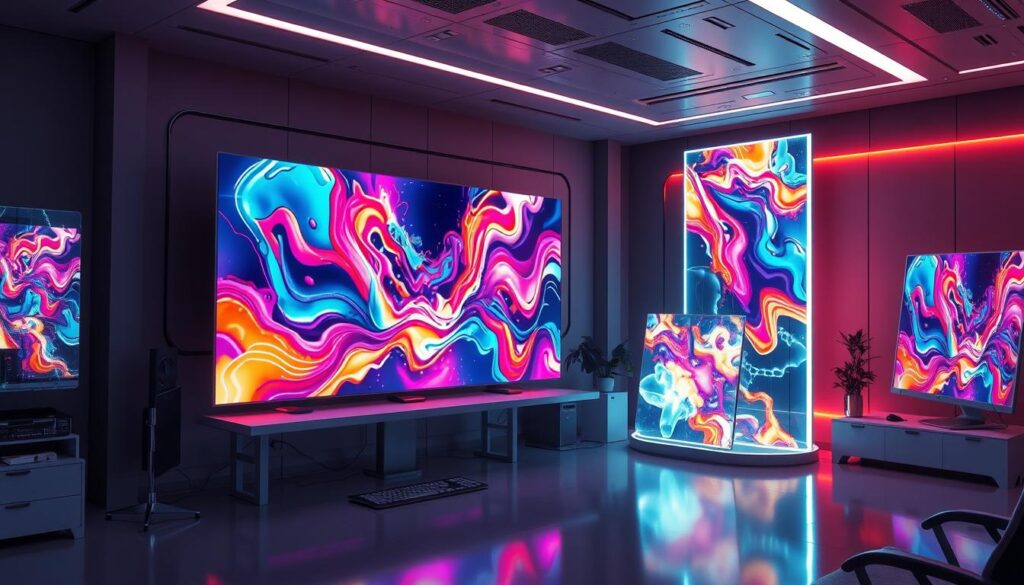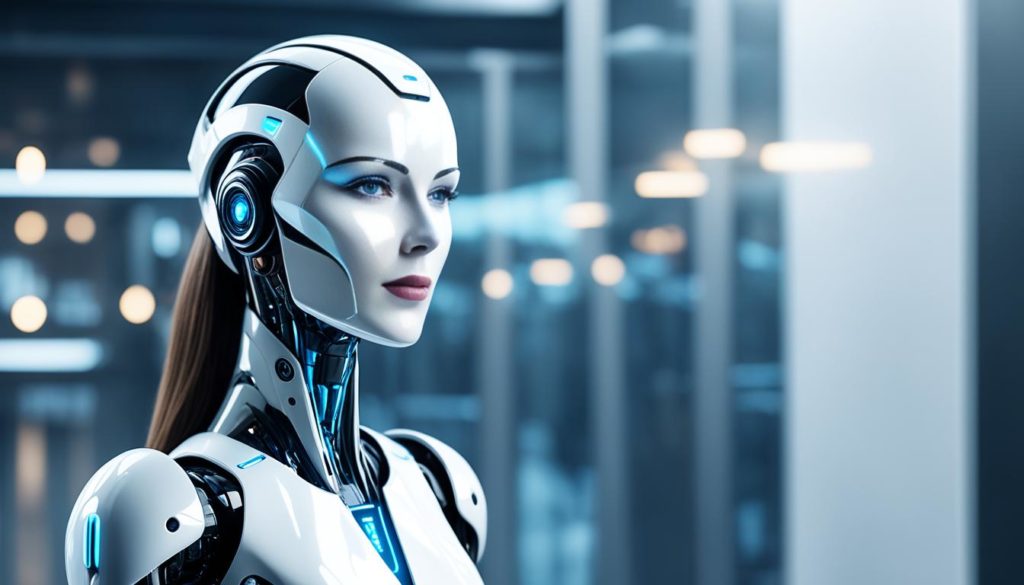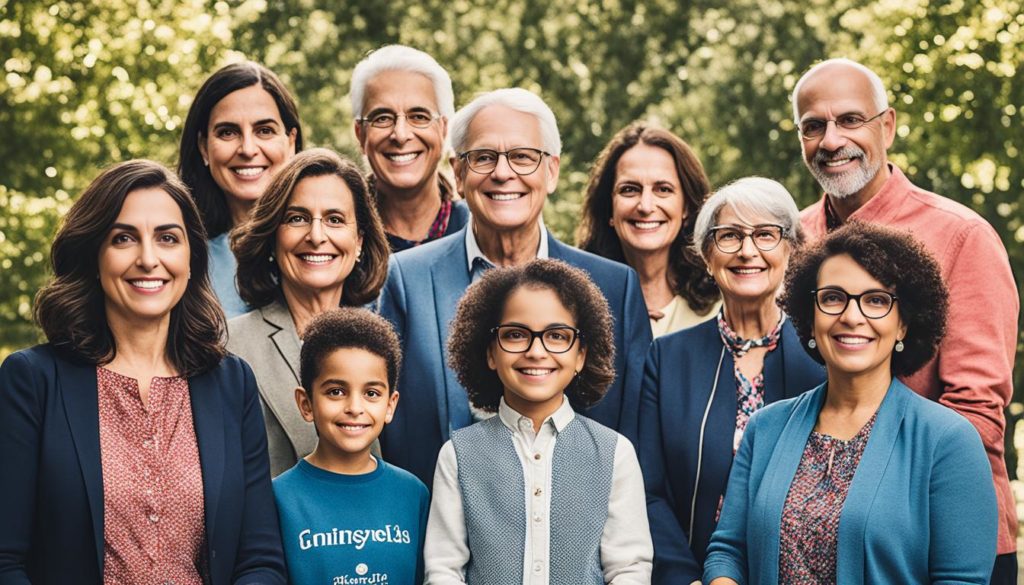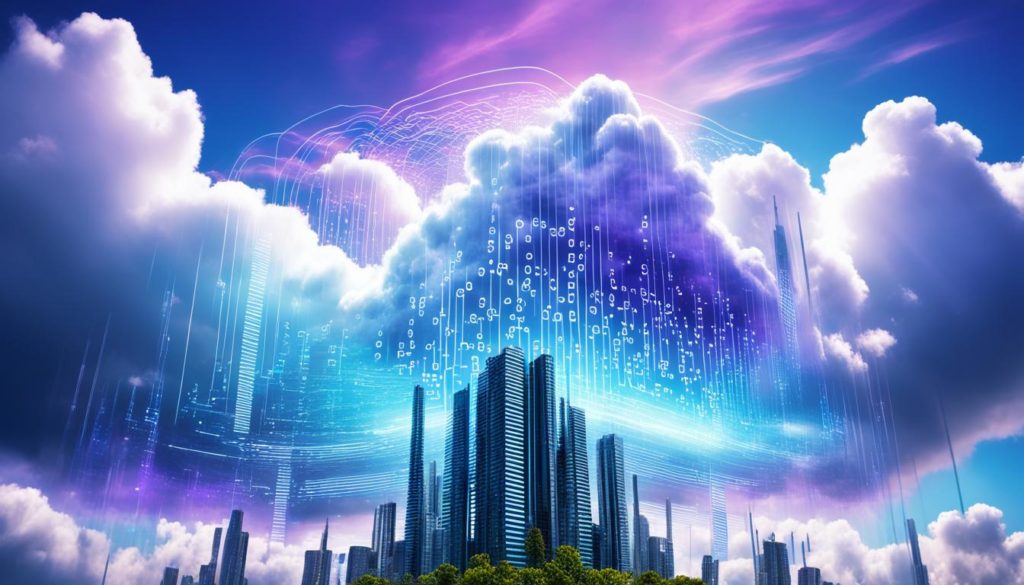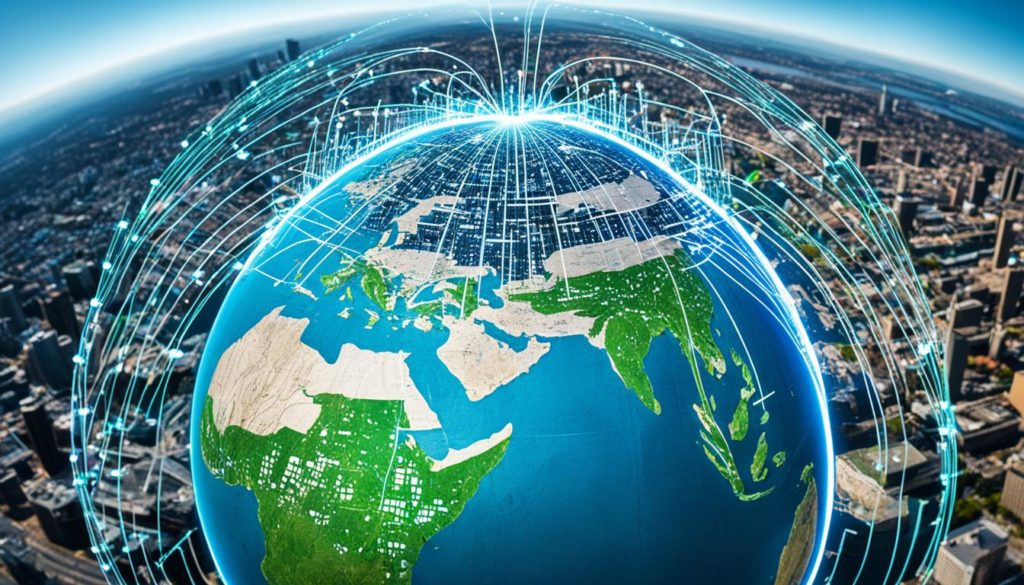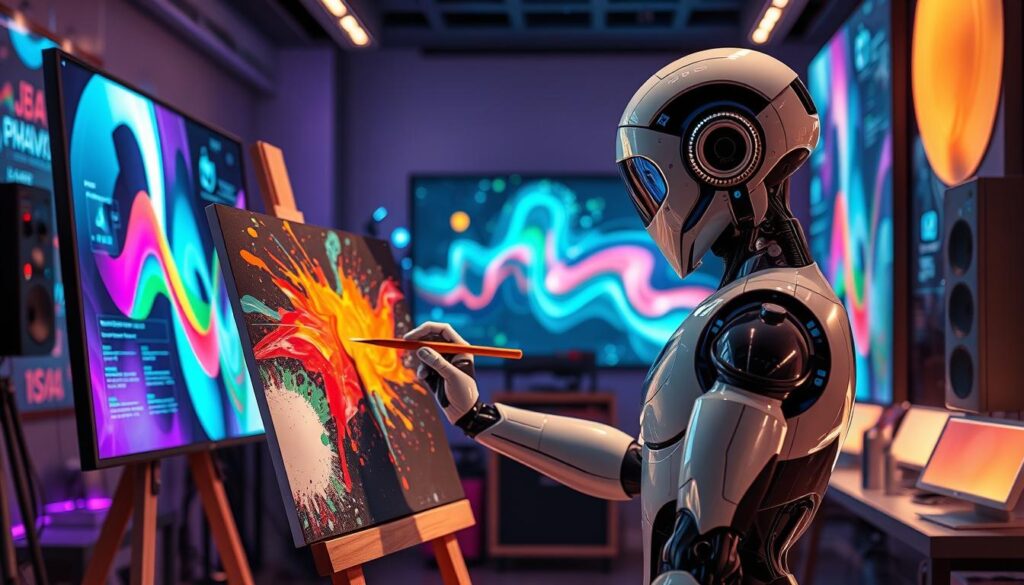
Did you know that about 50% of people think AI art is real art? The other half strongly disagrees. This shows a big debate about AI and art. The use of AI in art is changing how we see creativity.
This new area is more than just using new tech. It’s a mix of human creativity and AI power. Tools like DeepArt, DALL-E, and MidJourney are making art that looks amazing, just like human artists.
Systems like GANs and LSTM neural networks are key in AI art. They help create art, write scripts, and even make music. This shows AI’s wide range of skills, making us rethink what art is.
But, mixing art and tech also raises big questions. For example, AI uses old art to make new pieces. This makes us wonder about who owns the art and if it’s real.
Exploring AI art shows both new chances and challenges for artists. For more on this exciting and complex topic, read here.
Key Takeaways
- AI creating art is a rapidly evolving field with significant implications for creative expression.
- Generative Adversarial Networks (GANs) and LSTM neural networks are pivotal in AI-driven art.
- Ethical concerns include the use of existing artworks to train AI models.
- AI-generated art challenges traditional notions of artistic intent, emotion, and authenticity.
- AI’s potential to devalue human creativity raises important questions about the future of art.
- Despite challenges, AI offers innovative opportunities for collaboration and expanding artists’ toolboxes.
Understanding AI-Generated Art
AI-generated art is a new mix of tech and creativity. It uses advanced algorithms to make original art. This art can be digital images, paintings, sculptures, music, or poetry.
Defining AI-Generated Art
AI has changed art with new techniques like Generative Adversarial Networks (GANs) and Variational Autoencoders (VAEs). These models help create art, like “Unsupervised” at MoMA. AI-generated art uses big datasets to learn and copy different styles.
How AI Creates Art
AI art creation is interesting. AI models learn from huge datasets. They keep improving until they meet certain standards. But, AI art still lacks real creativity and understanding, affecting its emotional and cultural value.
The Rapid Evolution of AI in Art
AI in art has grown fast. Models like DALL-E 2, Midjourney, and Stable Diffusion are now public. Tools like these offer free trials but need subscriptions for more use. Each tool has its own strengths, like DALL-E for characters and Midjourney for art.
But, AI art raises ethical questions. We need to ensure it’s fair, unbiased, and transparent. It’s important to use AI wisely, keeping human creativity alive in art.
| AI Model | Key Feature | Use Case |
|---|---|---|
| GANs | Adversarial Feedback Loop | Unsupervised Art Projects |
| VAEs | Pattern Recognition | Patterned and Stylized Art |
| DALL-E 2 | Character Recognition | Character Arts |
| Midjourney | Lifelike Artworks | Art Creation |
| Stable Diffusion | Negative Prompt Feature | Refined Image Generation |
The Role of Machine Learning in Art Creation
Machine learning has changed how we make and see art. It uses neural networks and other advanced methods. This lets artists make new things that go beyond old limits. It also makes creating art faster and more creative.
Neural Networks and Art Generation
At the core of machine learning art software are neural networks. These mimic human brain cells, learning from big datasets to make new art. AI systems like DALL-E 2, Discord, and Midjourney create amazing visuals.
Generative adversarial networks (GANs) also play a big role. They help AI make art that shows complex human feelings. Neural networks aren’t just for pictures; they’re also used in music for movies and TV.
Automated Art Creation Techniques
Techniques like style transfer and pattern recognition open new doors for artists. They let AI quickly copy complex patterns. Big animation studios are starting to use AI, which might change jobs in the field.
But AI tools like GauGAN2 help artists try out new designs. This creates a team effort between humans and machines.
Platforms like Spotify, YouTube, and iTunes use AI for music suggestions. This shows AI’s use goes beyond just pictures. But, there’s debate about AI’s role in art. Some say AI’s abilities are overstated, while others worry it might replace human artists.
Studies show people prefer art made by humans. Kids like original things more than the same things made by machines. This shows how important human touch is in art.
Even with these biases, tech like virtual and augmented reality is changing the art world. It’s opening up new chances for artists and pushing what’s possible in art.
Impact of AI Creating Art on Traditional Artists
The rise of AI in art is changing how art is made and the role of traditional artists. Many artists see AI as a tool to explore new ideas and forms. This partnership can open up new creative possibilities. Yet, it also brings challenges and concerns.
Collaboration Between Artists and AI
AI and traditional artists are working together, creating new and exciting art. Studies show that 58% of artists want to use AI in their work. About 72% of visual artists find AI-generated images inspiring.
This collaboration between artists and AI leads to innovative works. These are things neither could do alone.
Expanding the Artist’s Toolbox
AI gives artists new tools to explore. Painting software and printing technology are getting better. These advancements let artists create works that look like originals.
About 65% of musicians use AI to compose music. Over 80% of writers and poets use AI prompts. This means traditional artists can find new inspiration and improve their work.
Concerns and Ethical Considerations
Despite the promise, ethical issues in AI art are real. Concerns include copyright, authenticity, and the value of human art. About 45% of artists worry about keeping their work authentic. 50% are concerned about the line between human and AI creativity.
Traditional galleries might be slow to accept AI art. But, the emotional connection to original art is still strong. This could help traditional artists keep their unique value in the market.
| Aspect | Percentage |
|---|---|
| Artists interested in AI | 58% |
| Visual artists inspired by AI-generated images | 72% |
| Musicians using AI for composition | 65% |
| Writers and poets using AI prompts | 80% |
| Concerns about maintaining authenticity | 45% |
| Worries about blurring creativity boundaries | 50% |
AI Creating Art: Advantages and Challenges
Artificial Intelligence (AI) has changed many fields, including art. We need to look at both the good and bad sides of AI art. AI gives artists new ways to create, but it also raises important questions about digital art ethics.
In just over two years, more than 600 images have been made for AI projects. This shows how much AI can help in creating art.
Enhancing Creativity with AI
AI can make creativity better by helping artists come up with ideas and illustrations. It makes creating art faster and better. AI can look at lots of data quickly, which helps in making smart choices in fields like healthcare and finance.
For artists, AI means they can try new styles and techniques. It also helps make art more accessible by using tools like speech-to-text software.
Potential Downsides and Ethical Issues
But, there are big challenges with AI art too. One big issue is how AI uses data. AI uses lots of art to learn, which can lead to problems with who owns the art.
Traditional artists are worried that their work might be copied and used without their permission. They also fear that AI art might make their work seem less valuable. This could make artists feel like they’re losing their special touch in a world filled with AI.
There are also worries about AI art spreading false information and not being clear about how it makes decisions. This is a big problem in areas like healthcare and finance, where being clear and honest is very important.
AI also collects personal data, which can be a big risk to our privacy. This makes many people in the art world and beyond very concerned.
In short, AI is a big step forward for creativity, but we need to use it wisely. By facing these challenges, we can make sure AI art adds to, not takes away from, the beauty of human creativity.
FAQ
What is AI-generated art?
AI-generated art is made using artificial intelligence. It uses complex algorithms and machine learning to study lots of art. This way, it can create new pieces that look just like human art.
How does AI create art?
AI makes art with neural networks, which are like human brains. These networks learn from lots of art and make new pieces. They use techniques like ‘style transfer’ to make art that’s both new and human-like.
What is the role of machine learning in art creation?
Machine learning is key in making art with AI. It lets AI systems learn from lots of art. This makes creating art faster and lets AI try out complex ideas that humans might find hard to do.
How has AI impacted traditional artists?
AI has changed how traditional artists work. Some see AI as a tool to explore new ideas. But, it also brings up questions about who owns the art and if AI art is real, leading to debates.
What are the ethical considerations in AI-generated art?
There are big ethical questions with AI art. Like, who owns the rights to the art used to train AI? And is AI art really art? These are important to figure out as we mix human and AI art.
What are the advantages of using AI in art?
AI can really help artists be more creative. It gives them new styles and ways to make art. It also makes making art faster and lets them try out complex ideas.
What are the potential downsides and ethical issues of AI in art?
AI can also cause problems. Like, using art without permission and worrying that AI might take over traditional art. We need to find a way to keep things fair and respectful in the art world.
Future App Studios is an award-winning software development & outsourcing company. Our team of experts is ready to craft the solution your company needs.


